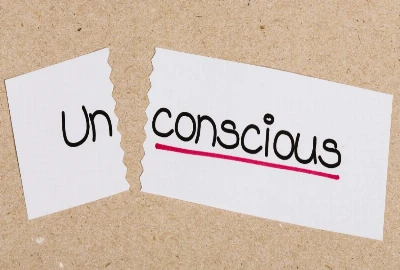Ghosts in the Machine: Can You Really Haunt the Internet?

The internet never forgets—or so the saying goes. Every photo, message, and post lives somewhere in the digital ether, lingering long after we log off. But what happens when the person behind the profile is gone? Can a trace of someone—an algorithm, a playlist, a tweet—become a kind of ghost story for the digital age?
Welcome to the concept of haunting the internet, where human memory meets machine permanence. It’s not about the supernatural, but about the ways technology preserves fragments of who we were—and sometimes, refuses to let go.
This blog explores how our online presence becomes our afterlife, how algorithms “remember” us, and what it means to live in a world where even death isn’t enough to erase a digital footprint.
The Digital Afterlife: When Data Becomes a Ghost

The Persistence of Memory in the Cloud
Unlike physical belongings that fade or decay, digital traces are designed to endure. Social media accounts, emails, and photos stored on cloud servers can outlive us by decades. Platforms like Facebook and Instagram now offer “memorialized accounts,” allowing loved ones to manage or preserve the profiles of the deceased. These pages become digital headstones, where visitors can scroll through the fragments of a life once lived.
Data as Modern Remains
In many ways, our data has become our most enduring legacy. Photos, playlists, and even chat histories act like digital relics—pieces of us frozen in time. These fragments can comfort the living, but they can also unsettle, as algorithms continue to suggest interactions with the dead: birthday reminders, “memories,” and friend suggestions that ignore mortality.
The Rise of Digital Immortality
New technologies promise to take this even further. Companies like Eternime and Replika have experimented with AI avatars that mimic personalities based on past messages and posts. These “living memories” blur the line between preservation and resurrection—raising the question: are we creating ghosts, or refusing to let them rest?
Haunting Algorithms: When the Machine Remembers Too Much

The Algorithmic Echo
Algorithms are designed to learn from human behavior—but they don’t understand grief. When someone dies, their digital patterns continue to exist in data systems. Recommendation engines, ad targeting models, and search algorithms still process their data, making it seem like they’re still active. This creates a technological haunting—a data ghost that lingers, uninvited and unintentional.
The Emotional Shock of Automated Reminders
Social media platforms often resurface “On This Day” memories or tag old friends without knowing who’s gone. These reminders can feel like hauntings—sudden encounters with the digital traces of someone you miss. It’s not the supernatural at work—it’s machine logic colliding with human emotion.
When AI Recreates the Dead
Artificial intelligence takes haunting to a new level. Deepfake technology can now replicate voices and faces with eerie precision. Some people have used it to “speak” to their deceased loved ones through chatbots or video simulations. While this offers comfort to some, others find it deeply unsettling—a technological séance that blurs the line between remembrance and denial.
The Ethics of Digital Haunting: Who Owns a Ghost?

The Question of Digital Ownership
Once we die, who owns our data? Tech companies often hold more information about us than our families do, and their policies on data after death vary widely. Facebook allows memorialization, while Google offers an “Inactive Account Manager” feature. Yet few people plan their digital wills, leaving families in limbo over access, privacy, and control.
Emotional Consent and Digital Ghosting
There’s also the question of emotional consent. Should we have the right to decide whether our likeness, messages, or images can be used after death? Without clear boundaries, digital haunting can cross into exploitation—especially when AI-generated replicas of real people are used for profit or content.
The Commodification of Memory
Brands and media companies have begun using posthumous digital recreations for entertainment and advertising. From holographic concerts of deceased musicians to AI-generated performances, memory itself has become a marketable asset. The dead, once honored, are now monetized—turning nostalgia into an industry.
Digital Ghost Stories: When the Internet Refuses to Let Go

The Haunted Feeds of the Internet
There are countless stories of people who stumble upon “ghost accounts”—abandoned blogs, inactive profiles, or group chats frozen in time. Each is a fragment of someone’s digital life, preserved by the architecture of the web. Online spaces like Reddit and Twitter have become archives of ghostly presences—voices that speak long after their creators are gone.
Viral Memorials and Digital Rituals
In place of traditional mourning rituals, we’ve created digital memorials. Hashtags like #RIP or tribute threads on platforms like TikTok have become modern rituals of remembrance. Friends post messages “to” the deceased, keeping conversations alive in perpetuity. These rituals blur the line between closure and continuity—grief becomes something that’s always online.
When Grief Meets Glitch
Occasionally, these digital ghosts become literal glitches. Old accounts reactivated by bots, recycled phone numbers linked to social media logins, or hacked profiles can make the dead appear to “come back.” These moments—half technical error, half emotional shock—remind us that haunting in the digital age isn’t spiritual, but structural.
Living with Ghosts: Redefining Legacy in the Digital Age

Designing for Digital Mortality
As society becomes more entangled with technology, we’re beginning to design for death. Tech ethicists and designers are exploring ways to make online platforms more sensitive to mortality. Features like memorial modes, legacy contacts, and grief-sensitive algorithms are early steps toward digital empathy.
Still, the deeper question remains: should we design to preserve, or to let go?
Making Peace with Permanence
To haunt the internet is, in a sense, to be remembered. But memory without context risks distortion. When future generations encounter our posts, will they understand the emotions behind them—or just the performance? Digital legacies must balance preservation with perspective, allowing the dead to remain human rather than historical data points.
Ghosts as Digital Mirrors
Perhaps the “ghosts in the machine” aren’t just the dead—they’re us, the living, leaving behind fragmented versions of ourselves every time we post. Each status update, selfie, or search query contributes to a shadow archive of who we are. In this sense, haunting the internet isn’t just a posthumous act—it’s an ongoing one.




